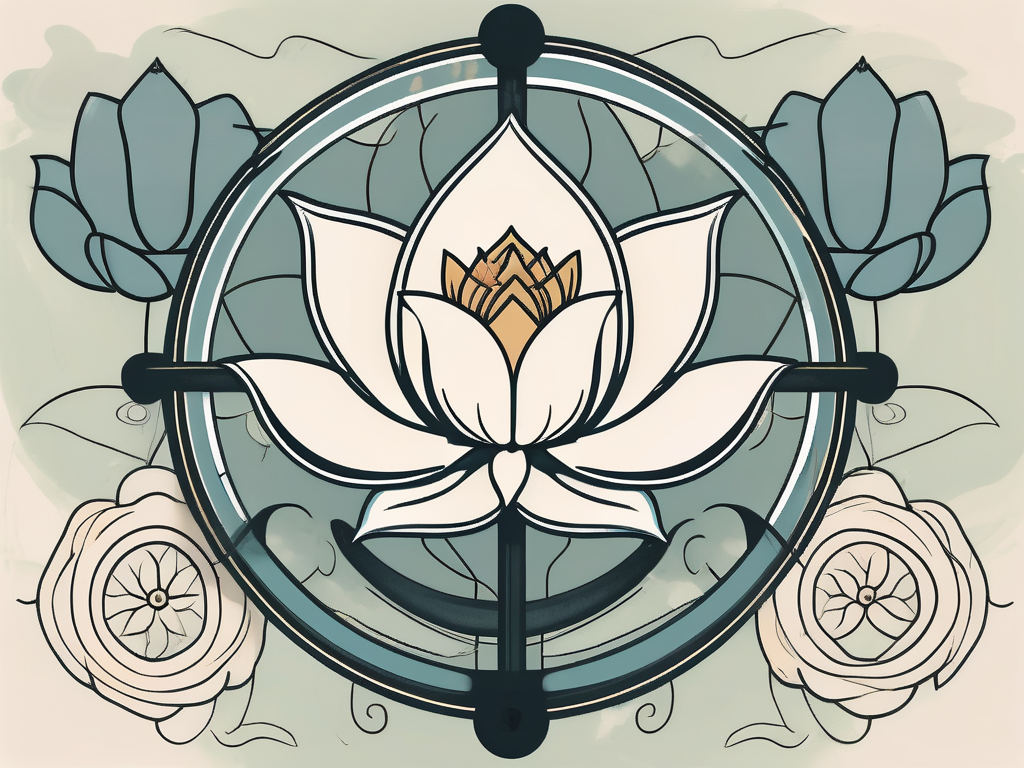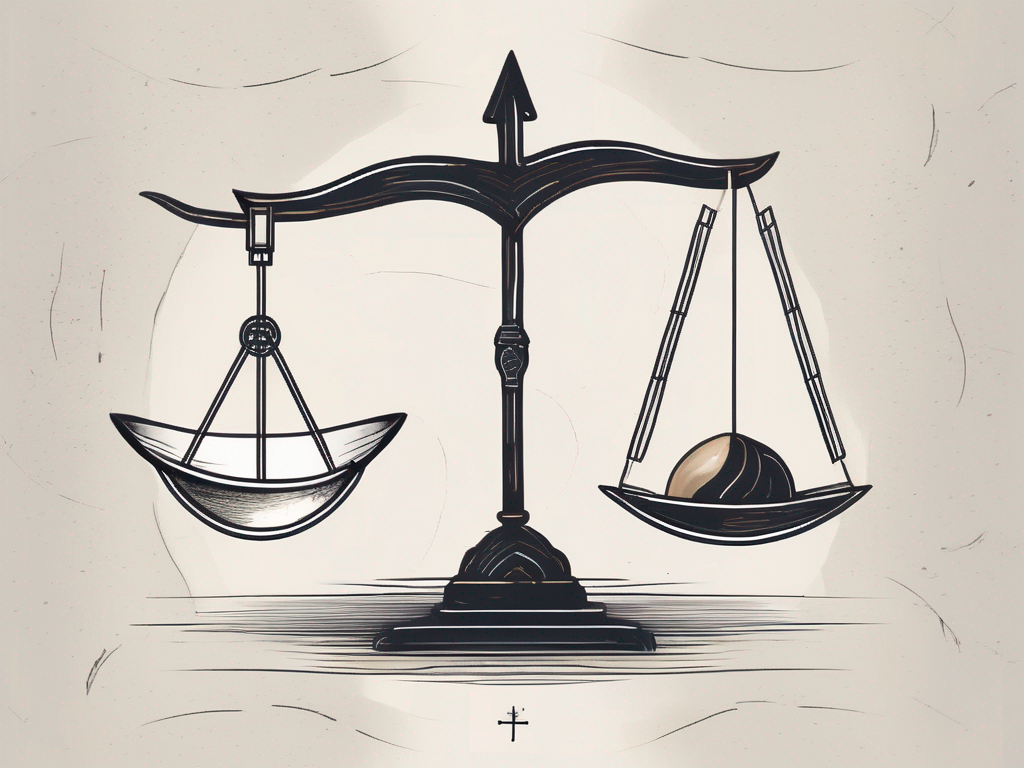Samsara, an integral concept in Buddhism, is a deep philosophical idea that encompasses the cycle of birth, death, and rebirth. It is a fundamental aspect of understanding the human existence and the path to ultimate liberation. In this article, we will explore the profound meaning of Samsara Buddhism and delve into its various facets.
Understanding the Concept of Samsara
Samsara, at its core, refers to the eternal cycle of existence. It is the perpetual journey of life, death, and subsequent rebirth. According to Buddhist teachings, every living being is trapped in this cycle, driven by the force of karma, until they attain enlightenment.
The concept of Samsara is deeply rooted in the belief that life is a continuous process of change and transformation. It is a cycle that encompasses the entire universe, from the smallest microorganisms to the vast galaxies. Just as the seasons change and the tides ebb and flow, so too does life follow a pattern of birth, death, and rebirth.
The Cycle of Birth, Death, and Rebirth
In Samsara, the cycle of birth, death, and rebirth is unceasing. Every life is bound to old age, illness, and ultimately, death. However, death does not mark the end of the journey, but rather a transition to a new existence. The nature of this existence is determined by one’s actions, thoughts, and deeds, known as karma.
When a being dies, they are reborn into a new form, whether human, animal, or even in a realm beyond our comprehension. This rebirth is not random, but rather a result of the accumulated karma from past actions. It is believed that the quality of one’s life and the circumstances they are born into are determined by the moral choices they made in previous lives.
For example, a person who has cultivated compassion, generosity, and wisdom in their past lives may be reborn into a favorable existence, surrounded by supportive conditions and opportunities for spiritual growth. Conversely, someone who has engaged in harmful actions, such as violence or greed, may be reborn into a more challenging existence, filled with suffering and obstacles.
The Role of Karma in Samsara
Karma acts as the driving force behind Samsara. It is the concept that every action has consequences, shaping one’s future existence. Positive actions lead to good karma, resulting in a favorable rebirth, while negative actions generate bad karma, leading to a less desirable rebirth. The accumulation of karma throughout multiple lifetimes determines the course of Samsara.
It is important to note that karma is not a form of punishment or reward, but rather a natural law of cause and effect. It is not a judgment imposed by an external force, but rather a reflection of one’s own intentions and actions. In this way, individuals have the power to shape their own destiny through their choices and behaviors.
Understanding the concept of karma encourages individuals to take responsibility for their actions and cultivate positive qualities such as kindness, compassion, and mindfulness. By doing so, they can create a positive trajectory for their future lives, ultimately breaking free from the cycle of Samsara and attaining enlightenment.
The Buddhist Perspective on Samsara
Samsara holds different interpretations within various Buddhist traditions, such as Theravada and Mahayana Buddhism.
Let’s delve deeper into the concept of Samsara and explore its significance in both Theravada and Mahayana Buddhism.
Samsara in Theravada Buddhism
In Theravada Buddhism, Samsara is seen as a cycle of perpetual suffering. It is believed that all beings are trapped in this cycle, continuously experiencing birth, aging, sickness, and death. This cycle is characterized by the Three Marks of Existence: impermanence (anicca), suffering (dukkha), and non-self (anatta).
The goal in Theravada Buddhism is to break free from this cycle through the attainment of Nirvana. Nirvana is the ultimate liberation from all suffering and the extinguishing of all desires, attachments, and ignorance. It is the state of complete enlightenment and awakening.
Theravada practitioners dedicate their lives to the pursuit of spiritual development, following the Noble Eightfold Path, which includes practices such as mindfulness, ethical conduct, and meditation. By cultivating wisdom and insight, they aim to transcend Samsara and attain the state of Nirvana.
Samsara in Mahayana Buddhism
In Mahayana Buddhism, Samsara is viewed in a slightly different light. It is seen as an opportunity for enlightenment and the journey to become a Bodhisattva. A Bodhisattva is a being who strives for the liberation of all sentient beings, vowing to postpone their own entry into Nirvana until all others are liberated.
This perspective emphasizes compassion and selfless action. Mahayana practitioners believe that by actively engaging in the world and helping others, they can alleviate suffering and contribute to the liberation of all beings. They see Samsara as a vast ocean of suffering, and their goal is to become a beacon of light, guiding others towards liberation.
One of the key practices in Mahayana Buddhism is the cultivation of the Six Perfections, which include generosity, ethical conduct, patience, joyful effort, concentration, and wisdom. These qualities are seen as essential for the Bodhisattva path, as they help develop compassion, wisdom, and skillful means to benefit others.
Moreover, Mahayana Buddhism also recognizes the concept of the Bodhisattva Ideal, which represents the aspiration to attain Buddhahood for the sake of all beings. This ideal inspires and guides Mahayana practitioners in their journey towards enlightenment.
Ultimately, whether in Theravada or Mahayana Buddhism, the concept of Samsara serves as a reminder of the impermanence and unsatisfactory nature of worldly existence. It highlights the importance of spiritual practice and the pursuit of liberation from suffering, whether for oneself or for the benefit of all sentient beings.
The Path to Liberation from Samsara
To achieve liberation from Samsara, Buddhists follow the teachings of the Buddha, which outline a path known as the Four Noble Truths and the Eightfold Path.
Buddhism, one of the world’s major religions, offers a profound understanding of the human condition and provides a path towards liberation from the cycle of birth, death, and rebirth known as Samsara. The teachings of the Buddha, Siddhartha Gautama, serve as a guiding light for millions of followers around the world.
The Four Noble Truths
The Four Noble Truths reveal the nature of suffering and provide guidance on how to overcome it. They assert that suffering exists, its cause is attachment and desire, it can be overcome, and there is a path to liberation.
Suffering, or Dukkha, is an inherent part of human existence. It manifests in various forms, ranging from physical pain to emotional distress. The Buddha recognized that suffering is universal and that it is essential to acknowledge its existence in order to find a way out of it.
The second noble truth highlights the cause of suffering, which is attachment and desire. The human tendency to cling to things, people, and experiences often leads to dissatisfaction and disappointment. By recognizing and understanding the root cause of suffering, individuals can begin to loosen the grip of attachment and desire.
However, the Buddha emphasized that suffering can be overcome. The third noble truth offers hope by asserting that liberation from suffering is attainable. By addressing the causes of suffering and cultivating a mind free from attachment and desire, individuals can find true peace and liberation.
The fourth noble truth introduces the path to liberation, known as the Eightfold Path. It is a comprehensive guide that encompasses various aspects of life and provides a roadmap towards liberation from Samsara.
The Eightfold Path
The Eightfold Path encompasses eight principles that guide individuals towards liberation from Samsara. It includes right understanding, intention, speech, action, livelihood, effort, mindfulness, and concentration.
Right understanding involves developing a clear and accurate understanding of the nature of reality, including the impermanence of all things and the interconnectedness of all beings. This understanding serves as a foundation for the other aspects of the path.
Right intention focuses on cultivating wholesome intentions and letting go of harmful ones. It involves developing compassion, loving-kindness, and a genuine desire for the well-being of oneself and others.
Right speech emphasizes the importance of using words that are truthful, kind, and beneficial. It encourages individuals to refrain from lying, gossiping, or using harsh and hurtful language.
Right action involves living ethically and morally. It encompasses refraining from harming others, stealing, engaging in sexual misconduct, and consuming intoxicants that cloud the mind.
Right livelihood encourages individuals to engage in work that is honest, ethical, and beneficial to oneself and others. It promotes the idea that one’s livelihood should not cause harm or contribute to the suffering of others.
Right effort emphasizes the importance of cultivating wholesome qualities and letting go of unwholesome ones. It involves making a continuous effort to develop positive qualities such as mindfulness, compassion, and wisdom.
Mindfulness, a key aspect of the Eightfold Path, involves being fully present and aware of one’s thoughts, feelings, and actions. It is a practice that cultivates a deep understanding of oneself and the world around them.
Concentration, the final aspect of the Eightfold Path, involves developing a focused and concentrated mind. Through practices such as meditation, individuals can cultivate a calm and clear mind, free from distractions and mental agitation.
By following the Eightfold Path, individuals can gradually free themselves from the cycle of suffering and attain liberation from Samsara. It is a lifelong journey that requires dedication, self-reflection, and a deep commitment to personal transformation.
The Symbolism of Samsara in Buddhist Art and Literature
Samsara holds profound symbolism in Buddhist art and literature, representing the cyclical nature of existence and the quest for enlightenment.
The concept of Samsara, meaning the continuous cycle of birth, death, and rebirth, is a central theme in Buddhist philosophy. It is believed that all beings are trapped in this cycle, endlessly experiencing suffering and dissatisfaction until they attain enlightenment and break free from the cycle.
In Buddhist iconography, Samsara is often depicted through intricate mandalas and symbolic representations. These visual representations serve as a reminder of the impermanence of existence and the need for spiritual growth. Mandalas, with their intricate patterns and vibrant colors, are visual metaphors for the complex and interconnected nature of life. They depict the various realms of existence, from the heavenly realms to the realms of suffering, highlighting the transient nature of each realm and the constant movement between them.
Furthermore, Buddhist art often incorporates symbolic elements to represent Samsara. The Wheel of Life, also known as the Bhavacakra, is a common symbol used to depict the cycle of existence. It consists of a wheel with six realms, each representing a different state of existence, such as the realm of gods, humans, animals, hungry ghosts, hell beings, and demi-gods. The wheel is held by a fierce figure representing impermanence, reminding viewers of the ever-changing nature of life.
Literary references to Samsara are abundant throughout Buddhist literature. Stories and parables highlight the struggles and triumphs on the path to liberation, inspiring practitioners to persevere in their own spiritual journeys. These narratives often feature characters who are trapped in the cycle of Samsara, facing various challenges and obstacles that reflect the universal human experience of suffering. Through their stories, readers gain insight into the nature of existence and the potential for liberation.
One famous example is the story of Siddhartha Gautama, the historical Buddha, who renounced his life of luxury and embarked on a spiritual quest to understand the nature of suffering. After years of meditation and self-discipline, he attained enlightenment under the Bodhi tree, breaking free from the cycle of Samsara and becoming the Buddha.
Another well-known tale is that of the Monkey King, Sun Wukong, from the Chinese classic “Journey to the West.” In this epic, Sun Wukong, a mischievous and powerful monkey, accompanies the monk Xuanzang on a journey to retrieve sacred Buddhist scriptures. Throughout their adventures, Sun Wukong faces numerous trials and temptations, symbolizing the challenges one must overcome on the path to enlightenment.
These literary references to Samsara not only entertain and inspire, but also provide guidance and teachings on how to navigate the complexities of life. They encourage readers to reflect on their own existence and contemplate the nature of suffering, impermanence, and the ultimate goal of liberation.
Samsara and Modern Buddhism
As Buddhism spread to the Western world, the concept of Samsara has adapted and evolved, allowing for contemporary interpretations and practices.
Contemporary Interpretations of Samsara
In modern Buddhism, Samsara is seen not only as an individual journey but also as a collective one. It emphasizes the interconnectedness of all beings, inspiring practitioners to work towards the liberation of all sentient beings.
Samsara in Western Buddhism
Western Buddhism incorporates Samsara into its teachings, recognizing the challenges faced in contemporary society. It offers practices and tools for navigating the complexities of life, striving for personal and collective enlightenment.
In conclusion, Samsara Buddhism holds profound significance for practitioners seeking a deeper understanding of existence and the path to liberation. The concept of Samsara encompasses the perpetual cycle of birth, death, and rebirth, driven by karma. It is through the teachings and practices of Buddhism that individuals can navigate this cycle, breaking free from suffering and striving for ultimate liberation. Whether through ancient traditions or modern interpretations, the exploration of Samsara illuminates the human quest for enlightenment and self-transformation.












